Fluttering jewels of the sky, hummingbirds captivate us with their iridescent feathers and acrobatic flights.
And in the state of Texas, these tiny marvels come in a stunning array of 17 different species.
From the fiery-throated Costa’s to the elusive Black-chinned, each type of hummingbird offers its own unique charm.
So come along as we explore the diverse world of Texas hummingbirds and discover the beauty that awaits in your own backyard.
| Image | Name |
|---|---|
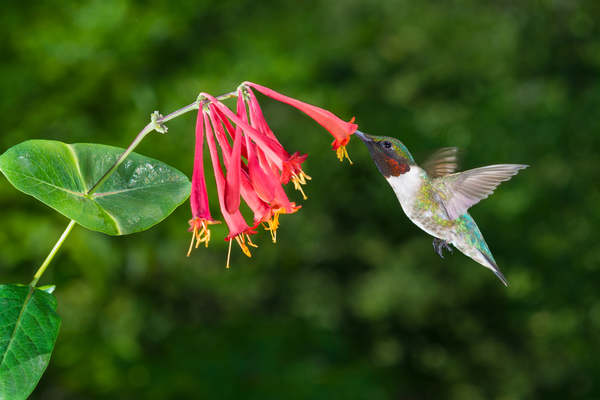 | Ruby-throated Hummingbird |
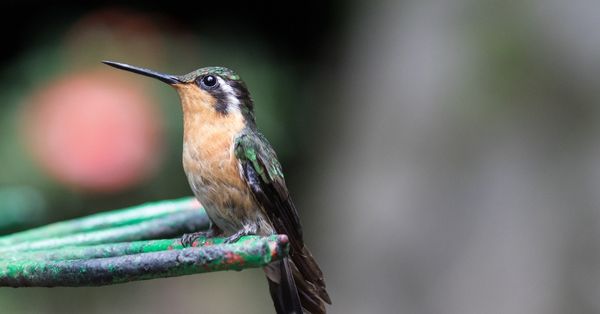 | Buff-bellied Hummingbird |
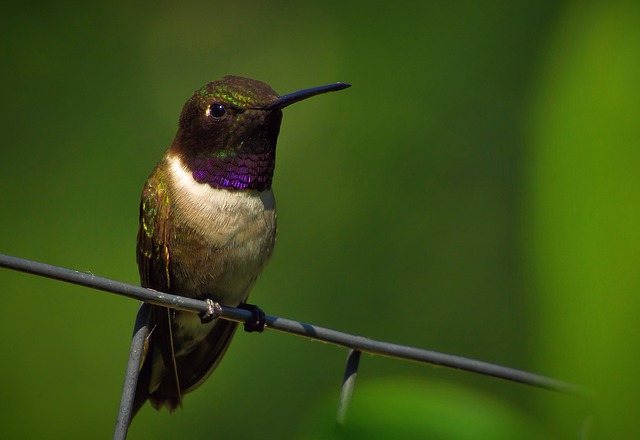 | Black-Chinned Hummingbird |
 | Rufous Hummingbird |
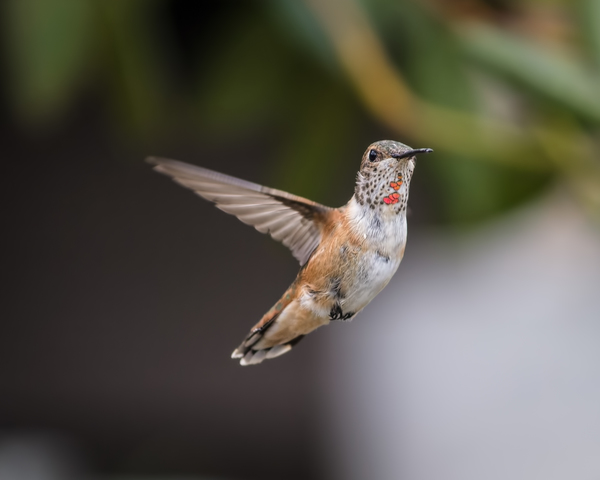 | Anna's Hummingbird |
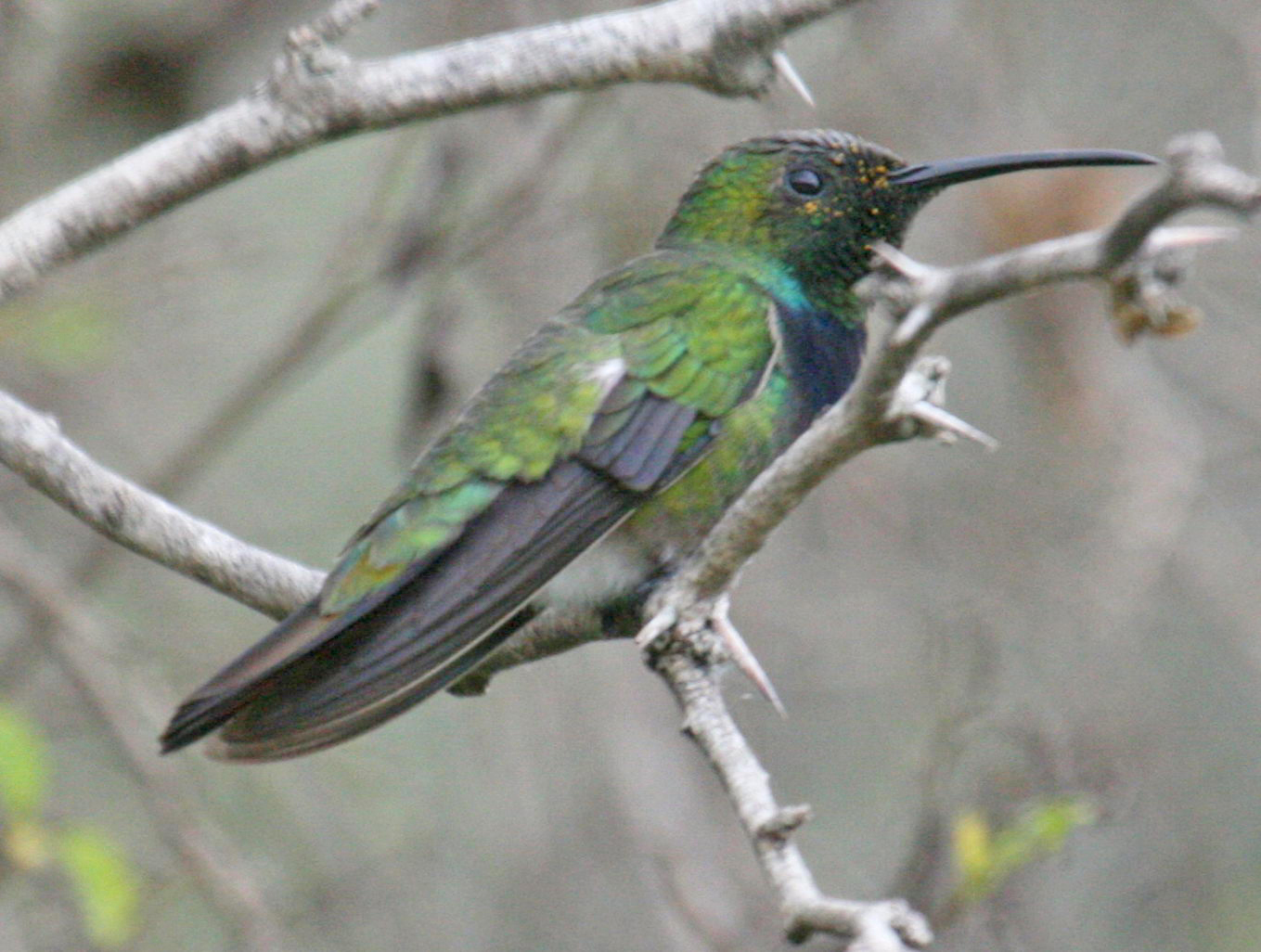 | Green-breasted Mango |
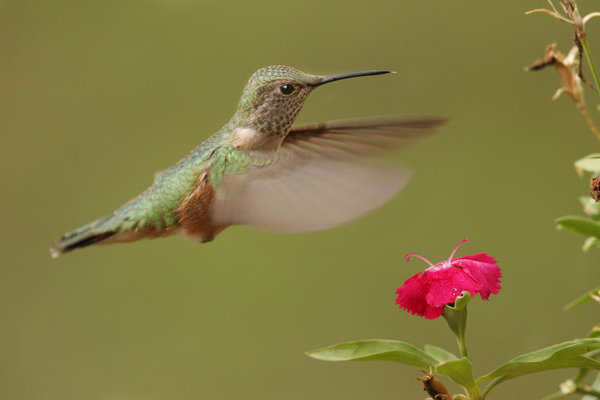 | Broad-tailed Hummingbird |
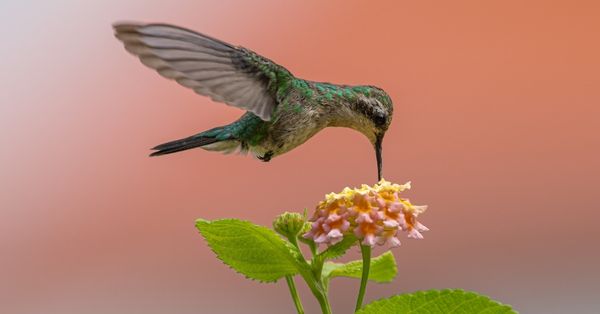 | Lucifer Hummingbird |
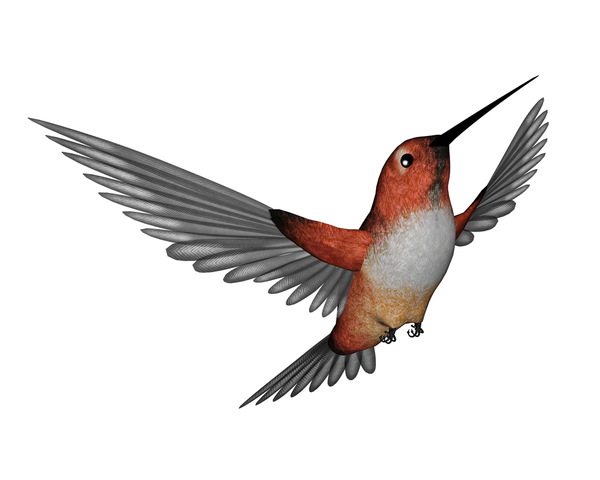 | Allen's Hummingbird |
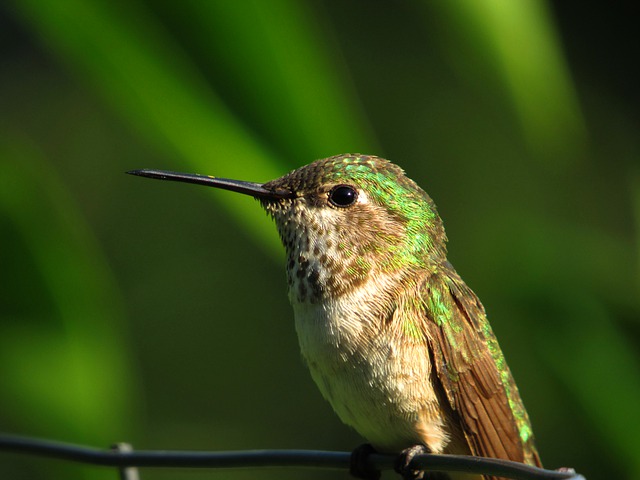 | Calliope Hummingbird |
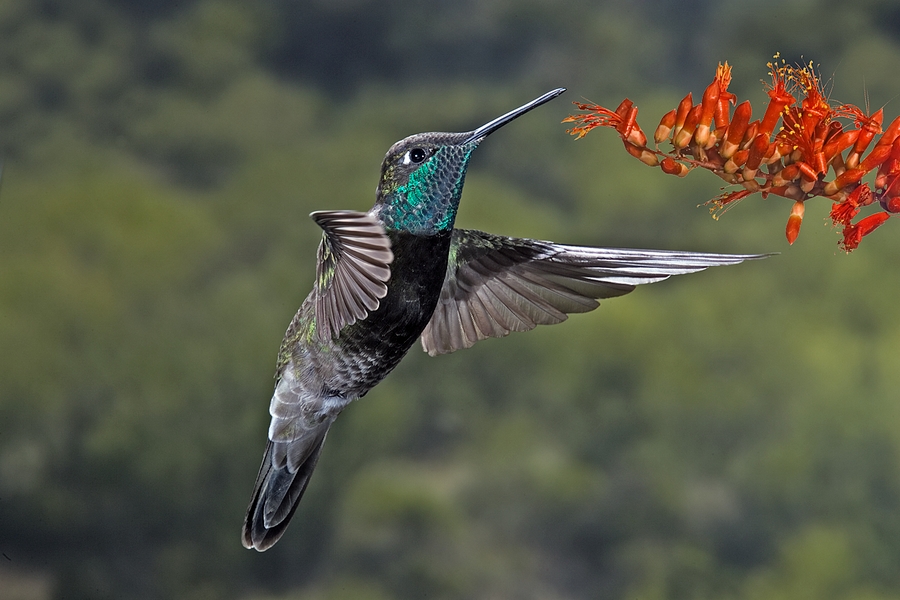 | Rivoli's Hummingbird |
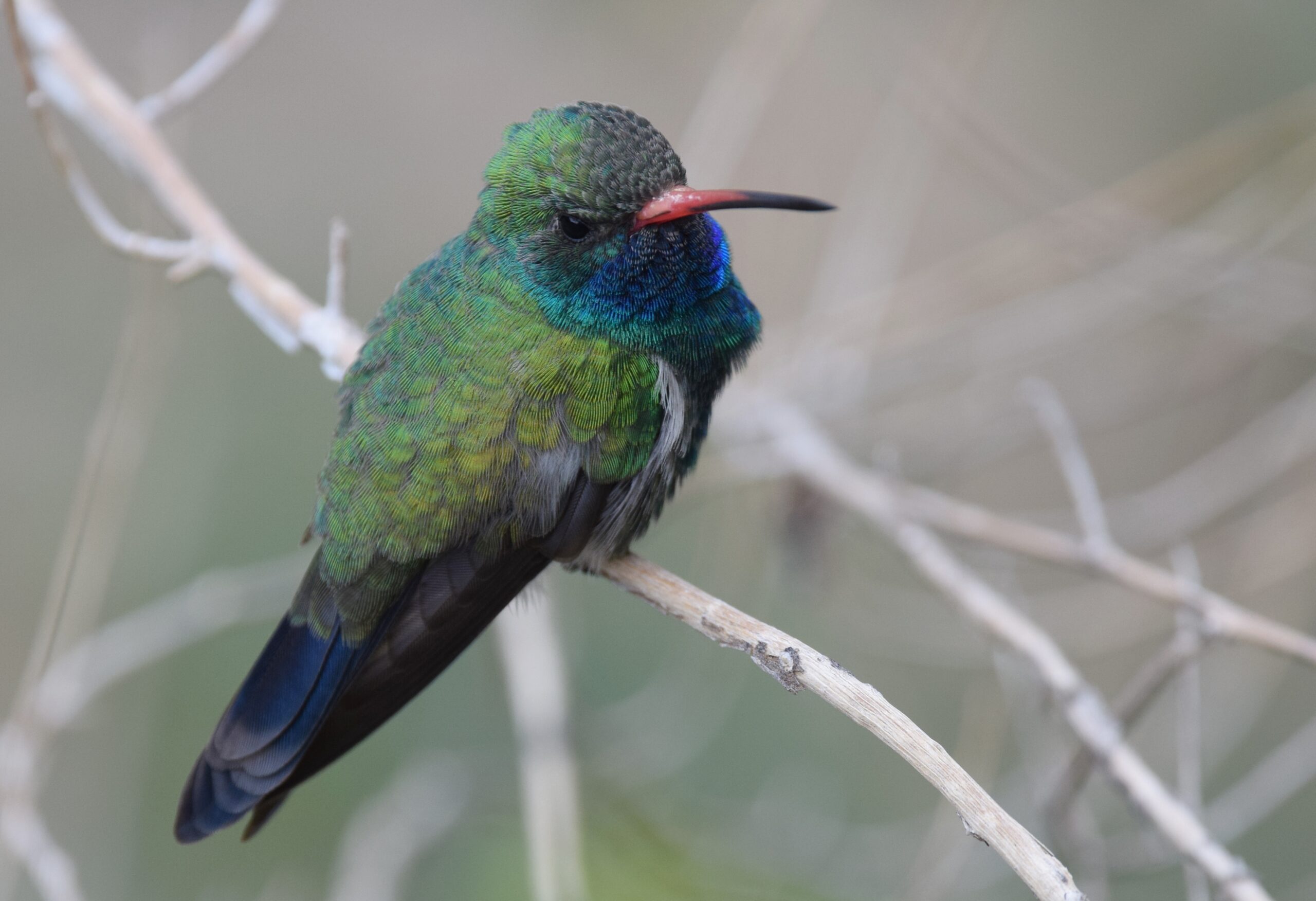 | Broad-Billed Hummingbird |
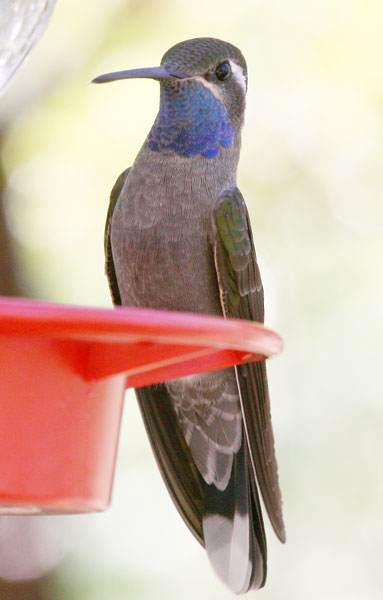 | Blue-Throated Mountain Gems |
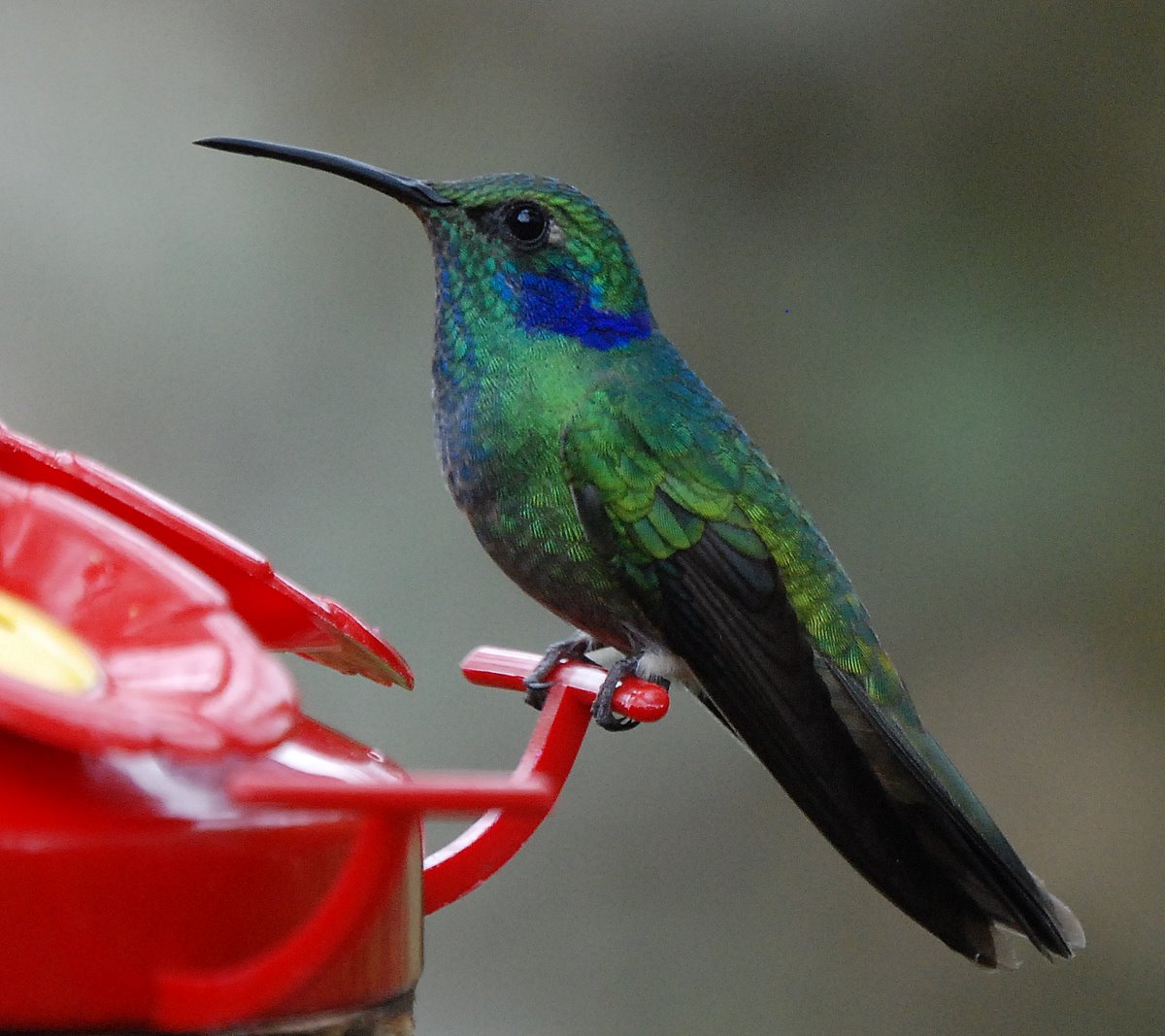 | Mexican Violetear |
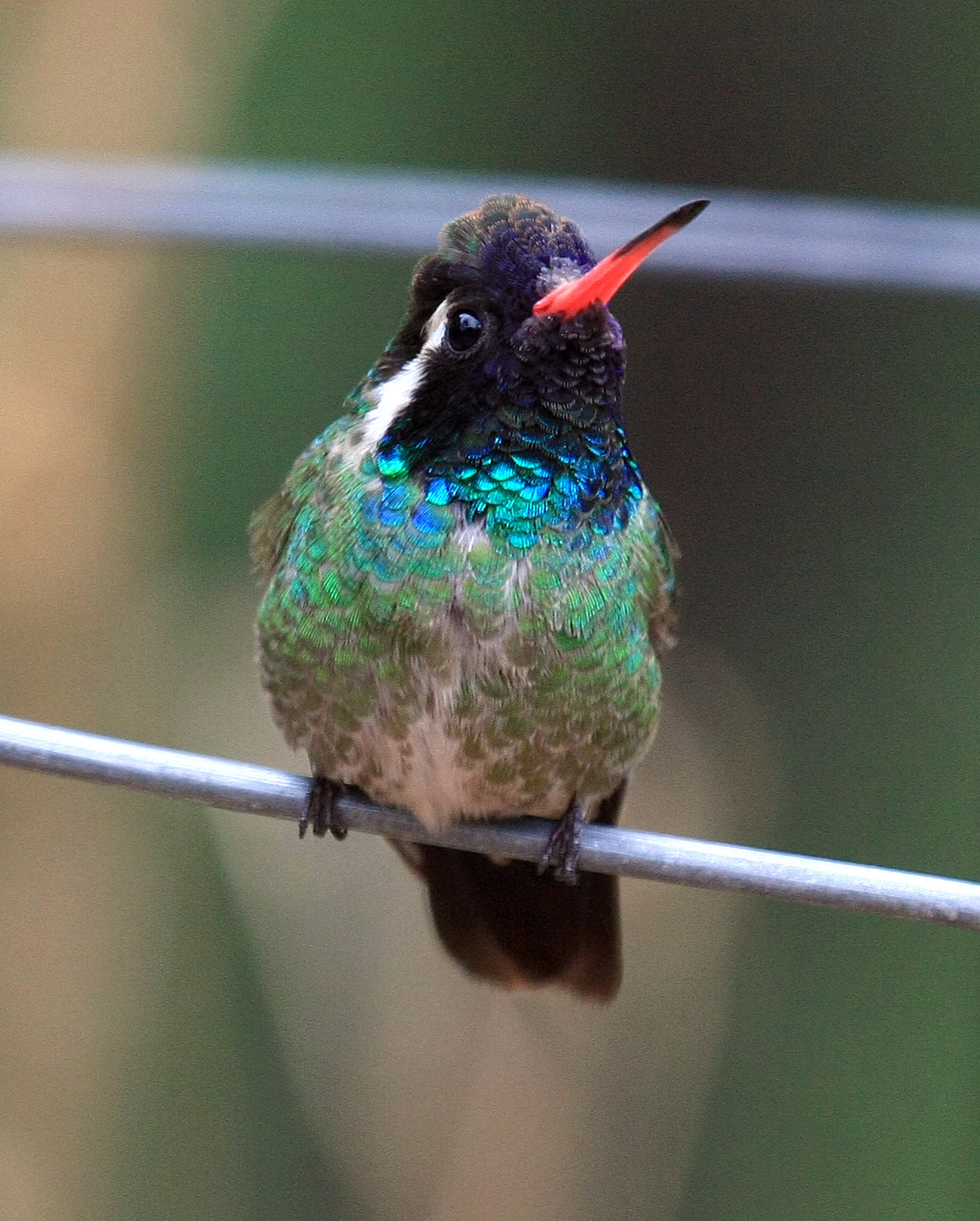 | White-eared Hummingbird |
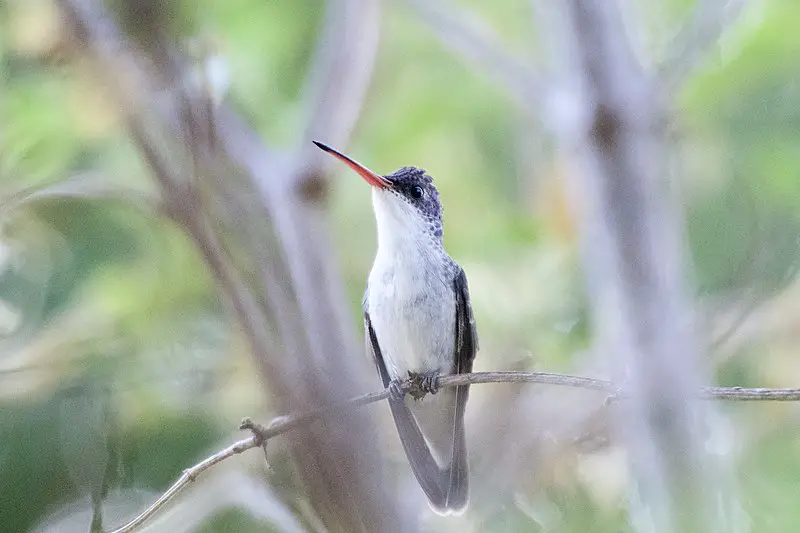 | Violet-crowned Hummingbird |
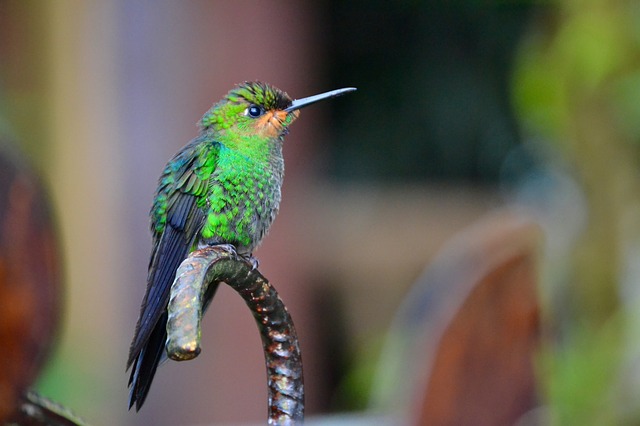 | Costa's Hummingbird |
Types of Hummingbirds in Texas
1. Ruby-throated Hummingbird

During migration, Ruby-throated Hummingbirds may be spotted flying across Texas.
During the spring, males typically arrive one to two weeks before females. However, there have been exceptions.
Ruby-throated Hummingbirds have a brilliant green head and back and a grayish-white underside, and the males possess an iridescent red throat.
The females have a grayish-white underbelly.
Female Ruby-throated Hummingbirds have a green back and a white underside, while their crowns and sides are brownish.
Late February to the middle of March is often the time when the first arrivals are recorded across Texas.
In the late summer and early autumn, Ruby-throated Hummingbirds congregate all along the coast of Texas & Gulf of Mexico in the month of September before beginning their last migration south for the winter.
The Ruby-throated Hummingbird is the sole hummingbird that breeds in the eastern part of North America; after breeding, the Ruby-throated Hummingbird migrates farther south to Central America.
Some go north across the Gulf of Mexico, while others move north into Texas and along the coast there.
They start to arrive in the deep south in the month of February, but they may not make it to the northern states or Canada until May in order to reproduce.
During the months of August and September, they travel south.
These itty-bitty birds may be seen zipping from one nectar source to another or catching insects in midair or even from spider webs.
They do not walk but rather shuffle along a perch while they sometimes rest on little twigs since their legs are too short to allow them to move.
The ideal locations to look for them while you’re out and about are flower beds or the margins of wooded areas in the summer.
They may also be seen often in urban areas, particularly at nectar feeders.
When it comes to protecting their flowers and feeders, male Ruby-throated Hummingbirds have a reputation for being rather violent.
They do not remain in the area for an extended period of time after mating and might even depart by the beginning of August.
The thistle or dandelion down that is used in the construction of ruby-throated female nests is bound together by spider silk.
The nests are built by ruby-throated females on slender twigs.
They lay anywhere from one to three very little eggs, each measuring approximately 0.63 inches (1.5 cm)
2. Buff-bellied Hummingbird

The bill of the male Buff-bellied Hummingbird is red, having a darker apex, whereas the bill of the female is darker overall.
This bird is of medium size.
Breeding grounds for the Buff-bellied Hummingbird extend from the Yucatan peninsula and southern Texas across Mexico all the way into Central America.
During the winter, the Buff-bellied Hummingbird might migrate down the Gulf Coast to Louisiana and Florida, traveling only modest distances along the way.
Between the months of April and August, nesting takes place in Texas among huge bushes or tiny trees that are situated relatively close to the ground.
They produce two eggs of a white color and may have two broods in a single year.
Buff-bellied Hummingbirds prefer semi-open environments or the borders of woodlands as their home, but they will also come to backyards to feed on flowers or nectar feeders if they are there.
They also consume a portion of their food in the form of smaller insects.
Nectar feeders and flowers with red tubular blossoms, such as Turk’s cap and red salvia, are great ways to entice more Buff-bellied Hummingbirds to your yard.
3. Black-Chinned Hummingbird

The upper parts of black-chinned Hummingbirds have a dull metallic green color, while the underparts are a grayish-white color.
The males possess a black neck with a thin iridescent purple foundation, while the females possess a light throat and white ends on the tail feathers.
Males possess a black neck with a narrow iridescent purple base.
Hummingbirds with black chins breed across Texas, and it’s possible that some of them stick around on the Gulf Coast year-round.
The Black-chinned Hummingbird spends most of its time breeding in the interior regions of western states.
During the winter, it travels to the Gulf Coast and western Mexico.
They consume spiders, nectar, and other tiny insects, and while they are eating on nectar, their tongues may lick anywhere from 13 to 18 times per second.
The Black-chinned Hummingbird lays two white eggs that are barely 0.7 inches long and are held together in their nests by a combination of plant down and spider silk.
Their nests are built of plant down and spider silk (1.3 cm)
It is not uncommon to see a Black-chinned Hummingbird perched on a little, bare limb at the very top of a dead tree.
These birds frequently return to the same perch year after year.
Along the canyons and rivers of the Southwest, as well as in the shady oak groves of the Gulf Coast, you may find them.
4. Rufous Hummingbird

However, some Rufous Hummingbirds may overwinter on the Gulf Coast, and you can also see them during the spring migration season.
Rufous Hummingbirds are most prevalent throughout Texas during the autumn migration.
After spending the summer across Canada and Alaska, Rufous Hummingbirds may be seen in Texas from the middle of July and the month of April.
Rufous Hummingbirds have an orange back and abdomen, a white spot below the neck, and an intense red throat in the males.
Males also have a white spot below the throat.
On their backs, the females have a greenish-brown coloration, while their sides and bellies have a rusty coloration.
Their bellies are white.
The Rufous Hummingbird is one of the birds that have among the longest migrations compared to its size since it may fly up to 4,000 miles in either direction.
They spend the summers in Mexico and the Gulf Coast and spend the winters in northwest Alaska, where they reproduce.
During the spring, they move north along the Pacific Coast, and in the late summer and autumn, they travel along the Rocky Mountains.
The majority of the Rufous Hummingbird’s diet consists of the nectar that is extracted from vibrant tubular flowers as well as small insects like midges, gnats, and flies.
They construct their homes high in the branches of trees, stuffing them with plants down and binding them with spider webs.
They produce two to three very little white eggs that are around half an inch (1.4 centimeters) long.
They are quite aggressive and will drive away any other hummingbirds that might also approach, including bigger hummingbirds and resident hummingbirds while they are migrating.
During migration, they will not remain in one location for an extended period of time and will drive away the majority of other hummingbirds if given the opportunity.
They spend the winter months in the woodlands and forests, but during the summer months, they may be spotted in alpine meadows.
5. Anna’s Hummingbird

Texas is a good place to look for Anna’s Hummingbirds throughout the winter.
Anna’s Hummingbird is a very little bird that is mostly green and grey in color.
The head and neck of the male are an iridescent reddish-pink color, while the throat of the female is grey with specks of red dotting throughout.
Anna’s Hummingbird is the most abundant species of hummingbird found along the Pacific Coast, despite the fact that it does not migrate.
During the courting ritual, the males do a spectacular dive performance in which they ascend up to an altitude of 130 feet in the air and then fall back down to the earth with a loud noise produced by their tail feathers.
Although gardens and parks with abundant, colorful flowers and nectar feeders are common places for Anna’s hummingbirds to be found, these birds may also be observed in scrub and savannah environments.
Nests of Anna’s Hummingbirds may be found anywhere from 6 to 20 feet up in trees, and the females typically have two to three broods each year.
6. Green-breasted Mango
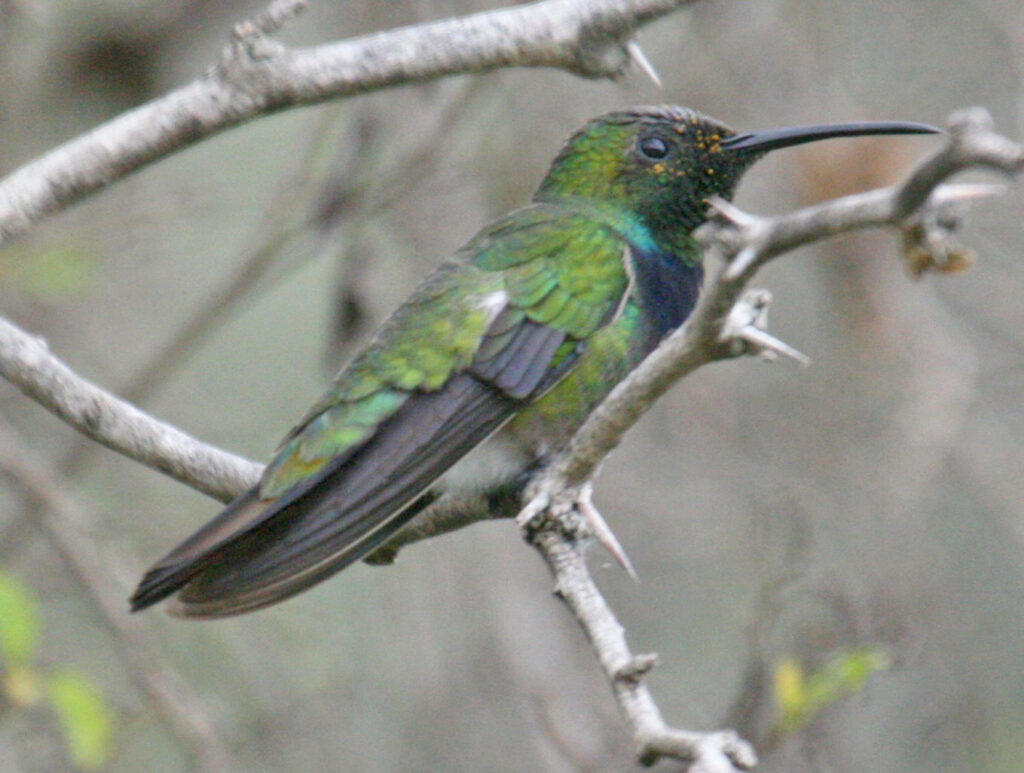
Although the Green-breasted Mango is extremely uncommon throughout Texas, there have been reports of a few sightings around the state’s southern border with Mexico.
The backs of green-breasted mangoes are glossy and brilliant green, and the males possess a blackish neck that is edged with blue on the chests of their offspring.
The undersides of females are white, and they have a black stripe running down the center of their bodies.
They also have a few metallic feathers that are a bluish-green color.
Near the shores of Central America and Mexico, as well as in certain areas of northern South America, you may find Green-breasted Mangoes.
The tropical deciduous woods, gardens, and even some open or moderately forested regions make up their natural environment.
7. Broad-tailed Hummingbird

The far west of Texas is where you’ll find breeding grounds for broad-tailed hummingbirds, but during migration, you could see these birds everywhere from the west to the north of Texas.
Broad-tailed Hummingbirds are distinct by their brownish wings, white chests, and iridescent green backs that extend down into their bellies.
Juveniles and females possess greenish spots on their cheeks and throats, while males possess a rose-colored iridescent patch on their necks and back.
In the western United States, during the months of late May and early August, broad-tailed hummingbirds usually nest in open woods and meadows at elevations of about 4,000 and 10,000 feet.
After breeding, these birds go to southern Mexico’s high meadows to spend the winter.
The Broad-tailed Hummingbird is able to enter a condition of torpor by lowering their body temperature and slowing their heart rate when they are exposed to lower temperatures at greater altitudes.
Hummingbirds typically feed on the nectar that is extracted from flowers; Broad-tailed Hummingbirds consume the nectar that is extracted from sage, larkspur, scarlet gilia, and red columbine; they will also visit hummingbird feeders that provide nectar.
They use insects as a supplement to their diet and can feed their offspring insects as a primary source of nutrition.
Nests of broad-tailed hummingbirds are often built on branches of evergreen or aspen trees.
These nests are constructed using gossamer, and spider webs are placed under overhanging twigs for additional insulation on chilly evenings.
8. Lucifer Hummingbird

Big Bend National Park and the Davis Mountains are both breeding grounds for Lucifer hummingbirds in the state of Texas.
The male Lucifer Hummingbird has a purple neck and a greenback, in addition to having a bent beak and a forked tail.
Flowering agaves, century, and ocotillo plants are the primary sources of food for these hummingbirds, which may be discovered in desert settings and arid valleys.
They are not often seen since the desert is their natural environment, which makes seeing one of these animals somewhat of a challenge.
The males will perform unexpected dives from a distance of one hundred feet in front of the females as part of their courting rituals.
Between the months of March and September, Lucifer hummingbirds may be seen breeding across northern Mexico as well as in a few isolated locations in the states of Arizona, Texas, and New Mexico.
They spend the winter in the central region of Mexico. Nests are often constructed on cacti or succulents, and the female will give birth to either one or two offspring every year.
9. Allen’s Hummingbird

During their journey through Texas during January or February, Allen’s Hummingbirds might be spotted more often than at other times of the year.
Within the limited stretch of coastal woodland and scrub where Allen’s Hummingbirds and Rufous Hummingbirds call home between California and Oregon, it may be difficult to tell the two species apart due to their striking resemblance to one another.
The necks of male Allen’s Hummingbirds are iridescent and seem reddish-orange, while their tails, bellies, and eye spots are also orange.
Both the males and females possess straight, long bills, and their backs have a coppery-green hue; however, the females do not have brilliant coloration on their throats.
The outer tail plumage of Allen’s Hummingbird is more slender than those of a Rufous Hummingbird, which is what distinguishes the two species.
They make their nests in shaded areas near streams at varying heights and may have a maximum of three broods a year.
Allen’s Hummingbirds spend the entire winter in Mexico and begin their journey north to the Pacific Coast during January.
They may be found across Washington, California, and Oregon.
Some continue to live in central Mexico, while others are based in or around Los Angeles.
10. Calliope Hummingbird

It is possible to see Calliope Hummingbirds across Texas throughout most of the year, with the exception of June, when they are seldom seen.
During the autumn migration, which occurs between the middle of July and the middle of September, they are spotted more regularly.
The Calliope Hummingbird, which is the tiniest bird in the United States and is about the size of a ping-pong ball, travels more than 5,000 miles each year, all the way from Mexico to Canada and back again.
Despite its diminutive size, it manages to make the journey.
They are also very capable of guarding their area and have even been seen to chase down Red-tailed Hawks.
Male Calliope Hummingbirds are distinguished by their brilliant magenta necks, which are referred to as the gorget, their shiny green backs and sides, and their black tails.
Females don’t have the iridescent throats seen on males and have a more pinkish-white underside as opposed to the white that males have.
The route that birds take in the spring to migrate to the Rocky Mountains from the coast of the Pacific Ocean takes them to nesting grounds across Colorado, California, and as far north as the northwest states and Canada.
They get an early start on their migration and arrive anywhere between the middle of April and the beginning of May.
Nests are often built on evergreen trees, and the birds may reuse an existing nest or construct a new one on top of an old one.
Migration in the fall takes place along the Rocky Mountains on the way to wintering sites in the southwest of Mexico.
11. Rivoli’s Hummingbird

Even though they are uncommon in the state of Texas, Rivoli’s Hummingbirds may be spotted in the Davis Mountains and Big Bend National Park.
Rivoli’s Hummingbirds are larger than most other species of hummingbirds and have more eye-catching coloring than other hummingbirds do.
They possess an iridescent purple crown in addition to the more common iridescent throat in males, which is emerald green.
This gives them a more striking appearance than other hummingbirds.
The males have a dark green color, while the females are greenish on their backs and have a grey underside.
The Rivoli’s Hummingbird is a species that is native to Mexico and Central America. However, there have been records of individuals traveling as far north as New Mexico, southern Arizona, and southwest Texas.
In hilly places, you may find them in pine-oak woods, but they will also visit feeders if you put out food for them.
They construct their nests at lofty locations.
12. Broad-Billed Hummingbird
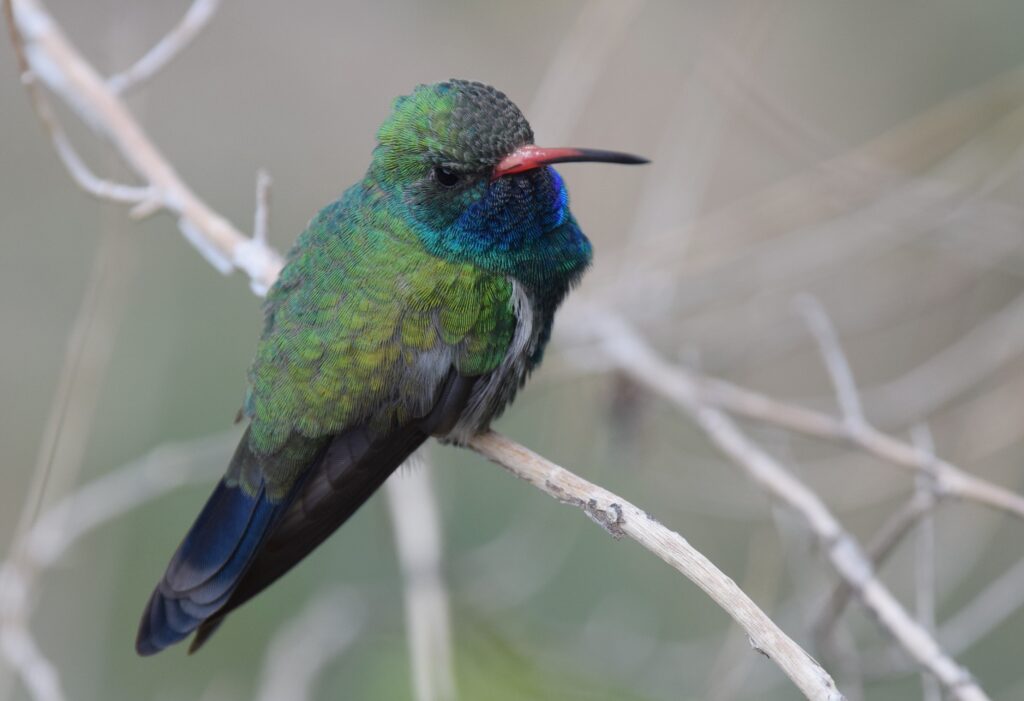
There are very few reports of Broad-billed hummingbird sightings in Texas; nevertheless, they have been reported along the state’s southern border and the southern Gulf Coast.
Broad-billed hummingbirds’ colors are very vibrant.
The males have a rich metallic green color, and they have a blue neck that runs down the center of their chests.
The bellies of females are white, and both the females and males have bright red beaks that are pointed at the end with a black tip and are broad near their heads.
The Pacific Coast of Mexico and the central region of the country are both home to year-round populations of hummingbirds.
In order to reproduce, some birds go farther north into the mountain valleys of New Mexico and southern Arizona, while others choose to spend the whole year in this area close to the border with Mexico.
Even though they prefer to eat in canyon waterfalls and mountain meadows, Broad-billed Hummingbirds will still come to your garden feeders if you put out sugar water and nectar.
Near streams, nests are often constructed at a height of approximately three feet from the ground.
13. Blue-Throated Mountain Gems

Although they are uncommon, Blue-throated Mountain gems may be seen mating in the Chisos Mountains of Texas throughout the summer and spring months.
As its name indicates, the Blue-throated Mountain-gem is the biggest species of hummingbird that nests in the United States.
The males of this species have throats that are an iridescent blue color.
Both the female and male Blue-throated Mountain gems have a bronzy-green back and a grey underside and the ends of their otherwise black tail plumage are tipped with white.
Although they spend most of their time within Mexico, Blue-throated Mountain gems may sometimes be seen moving short distances northward into southern Texas and southeastern Arizona.
The best sites to look for Blue-throated Mountain gems are in mountainous forests near streams that have an abundance of flowers, as well as backyards that have feeders.
In order to avoid the heat during the day, they do most of their feeding early in the day and late in the evening.
Nests of Blue-throated Mountain gems may be up to 2.5 inches broad and anywhere from three to ten inches high.
This is because blue-throated mountain gems are bigger than other gem species.
14. Mexican Violetear
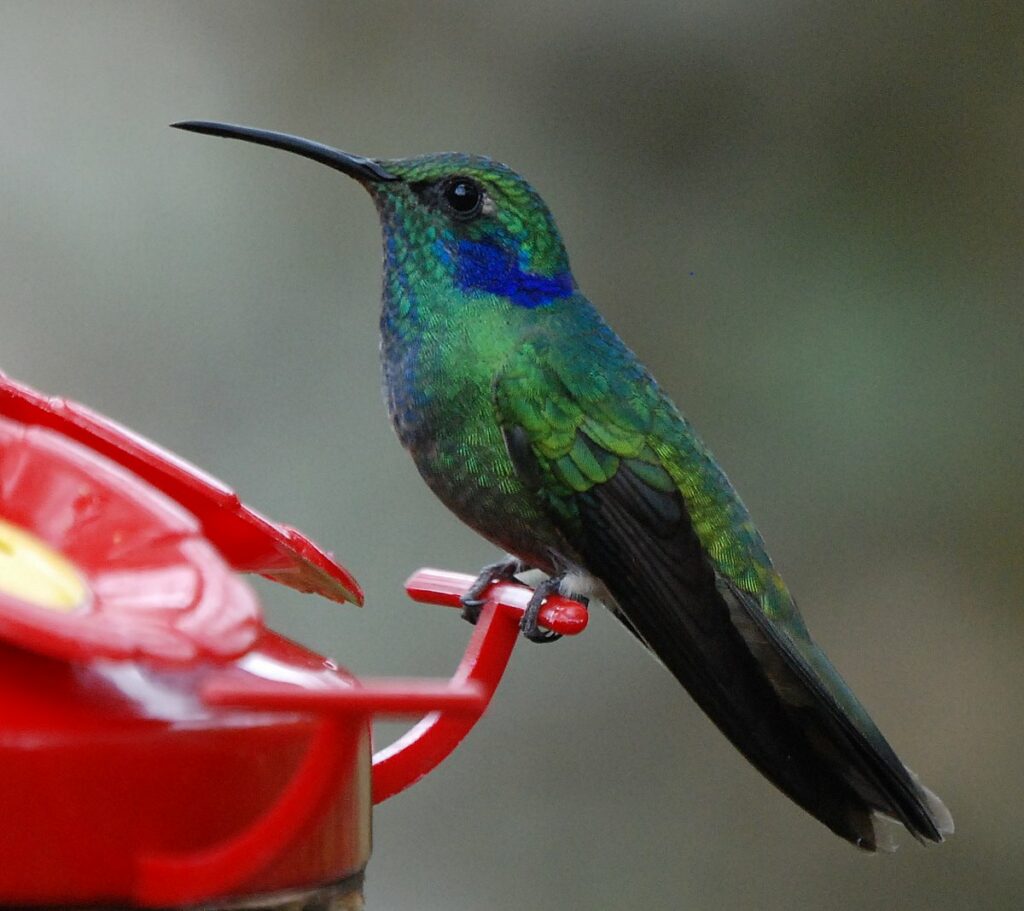
Metallic green in color, Mexican Violetears are about the size of other medium-sized hummingbirds and also have violet spots on the back of their heads and on their chests.
Breeding grounds for Mexican Violetears are located in the forested regions of Mexico, Nicaragua, and Central America.
However, these birds have been seen as far south as the mountainous regions of Bolivia and Venezuela.
There is a possibility that non-breeding Mexican Violetears may travel to the northern United States, particularly to Central and Southern Texas.
15. White-eared Hummingbird
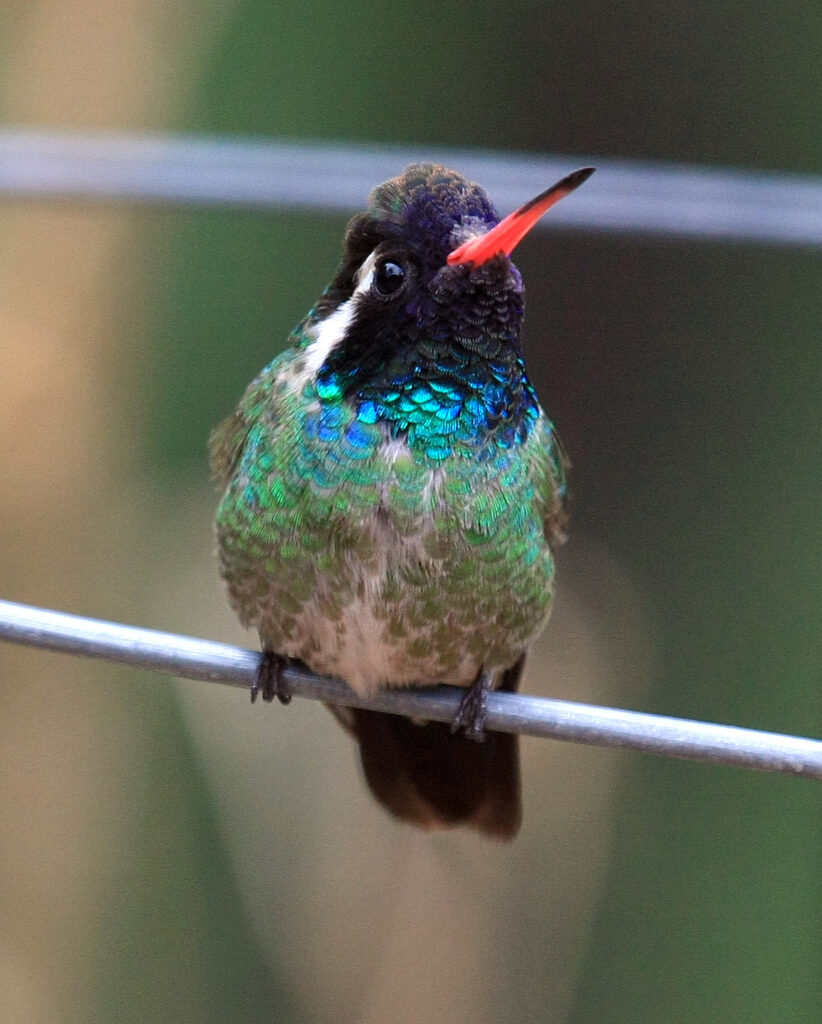
There have been sightings of the White-eared Hummingbird across Texas during the summer months around July and mid-October, mostly in Big Bend and Guadalupe highlands.
This species is very uncommon.
Both sex White-eared Hummingbirds have a black head with a white eyestripe, and their backs and chests are a bright green color.
White-eared Hummingbirds have white ears. The very tip of their beaks is black in color.
The males have a shiny turquoise-greenish coloration on their throats, and their faces feature violet spots.
The White-eared Hummingbird’s range extends from Nicaragua to the highlands of western Texas, southern Arizona, and southwestern New Mexico; nevertheless, sightings of this species in the United States are very uncommon.
They do so between the months of March and August across central and northern Mexico or later in the month of July across Arizona, and they could make up to three broods in a single year.
On the other hand, they may start arriving in Arizona in March and depart at the beginning of September.
White-eared Hummingbirds may be found nesting in shrubs or low trees in their natural environment, which includes dense undergrowth, woodlands, and even backyards.
16. Violet-crowned Hummingbird

Around El Paso, in the state of Texas, Violet-crowned Hummingbirds are occasionally seen, although they are very uncommon.
As the name suggests, violet-crowned Hummingbirds are about the size of common hummingbirds and possess a violet cap on their heads.
On the underside, they appear white, while the back is a dark olive green color.
Their beaks are mostly red, but the very tip is black.
Females are less colorful than men. They possess metallic tails that are bluish-green in color, and towards the tip of the tail, there is a band that is blue and black in color.
The range of the Violet-crowned Hummingbird extends from the highlands in the southeastern corner of Arizona and the southwestern corner of New Mexico all the way down into southern Mexico.
In February or March, they arrive mostly in the United States and typically nest across New Mexico and Arizona during April and September.
Although they go south for the winter, it’s possible that some might spend the season at the feeders in your garden.
Their natural habitats are tropical deciduous woods and semiarid scrub, and they typically build their nests on oak or sycamore trees.
17. Costa’s Hummingbird

Costa’s Hummingbirds are primarily desert hummingbirds with striking shimmering magenta throat spots that flare out and a purple crown.
They can be found throughout southern Texas in Big Bend National Park or in the south and west of Texas along the Mexican border.
Although they are rare, Costa’s Hummingbirds could perhaps be noticed in Texas.
Their abdomens are white, while their backs are greenish, and the sides of their tummies also have a green color.
The undersides of female Costa’s Hummingbirds are much more white and less purple than their male counterparts.
The state of Baja California, as well as southern and central California and southwest Arizona, are all home to Costa’s Hummingbirds.
During the winter, they may be found along the Pacific Coast of Mexico, but during the summer, they go north to breed in places like Arizona, the southernmost limits of Utah and Nevada, and California.
The habitat of Costa’s Hummingbirds consists of desert scrub, chaparral, and deciduous woodland, and they feed on a wide variety of plant species.
They build their nests in bushes at heights ranging from 3 to 8 feet above the ground, and they might have as many as two broods in a single year.
Conclusion
One of the reasons Texas is so great for birdwatching is the state’s abundance of hummingbirds.
During the spring, hummingbirds migrate from southern Mexico to northern Canada and the United States, passing through Texas on their way.
Each year in the autumn, on their way back to Mexico, they pass through the Lone Star State.
The state of Texas is a paradise for birdwatchers because of the presence of more than two dozen species of hummingbirds in the region.
FAQ
How many types of hummingbirds are there in Texas?
There are 17 different types of hummingbirds found in Texas.
When is the best time to see hummingbirds in Texas?
The best time to see hummingbirds in Texas is during the spring and summer months, when they are actively breeding and feeding. However, some species may also be seen during the fall and winter as they migrate through the state.
What is the most common type of hummingbird in Texas?
The Ruby-throated Hummingbird is the most common type of hummingbird found in Texas.
What is the largest type of hummingbird found in Texas?
The Black-chinned Hummingbird is the largest type of hummingbird found in Texas.
Are there any rare or endangered hummingbirds in Texas?
The Buff-bellied Hummingbird is considered a threatened species in Texas, and the Calliope Hummingbird is considered a species of special concern.
How can I attract hummingbirds to my backyard?
You can attract hummingbirds to your backyard by providing them with a source of food, such as nectar from flowers or a hummingbird feeder filled with a solution of four parts water to one part white granulated sugar. Additionally, you can plant a variety of native flowering plants that bloom at different times throughout the year to provide a continuous food source for the hummingbirds.
Last Updated on March 22, 2023 by Lily Aldrin
